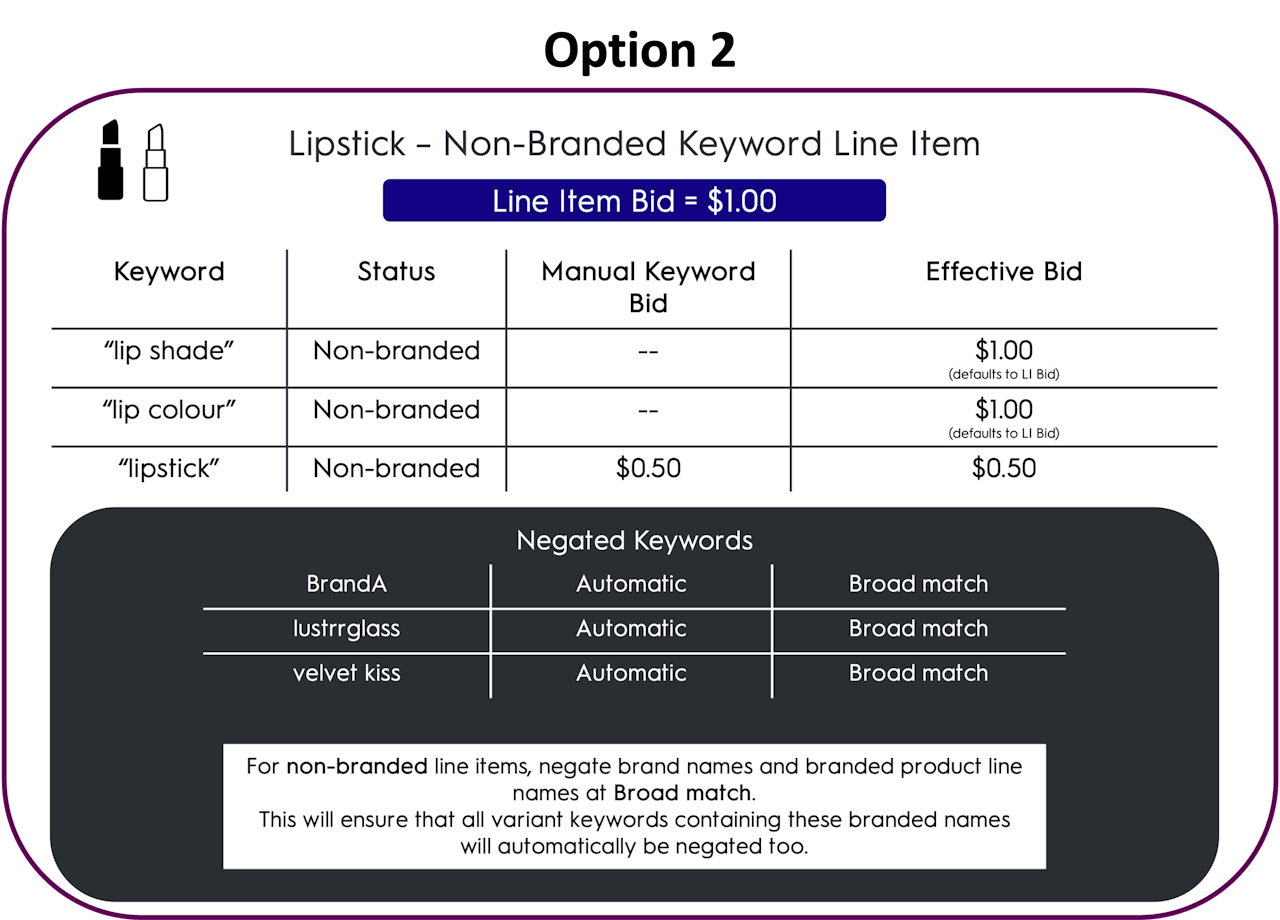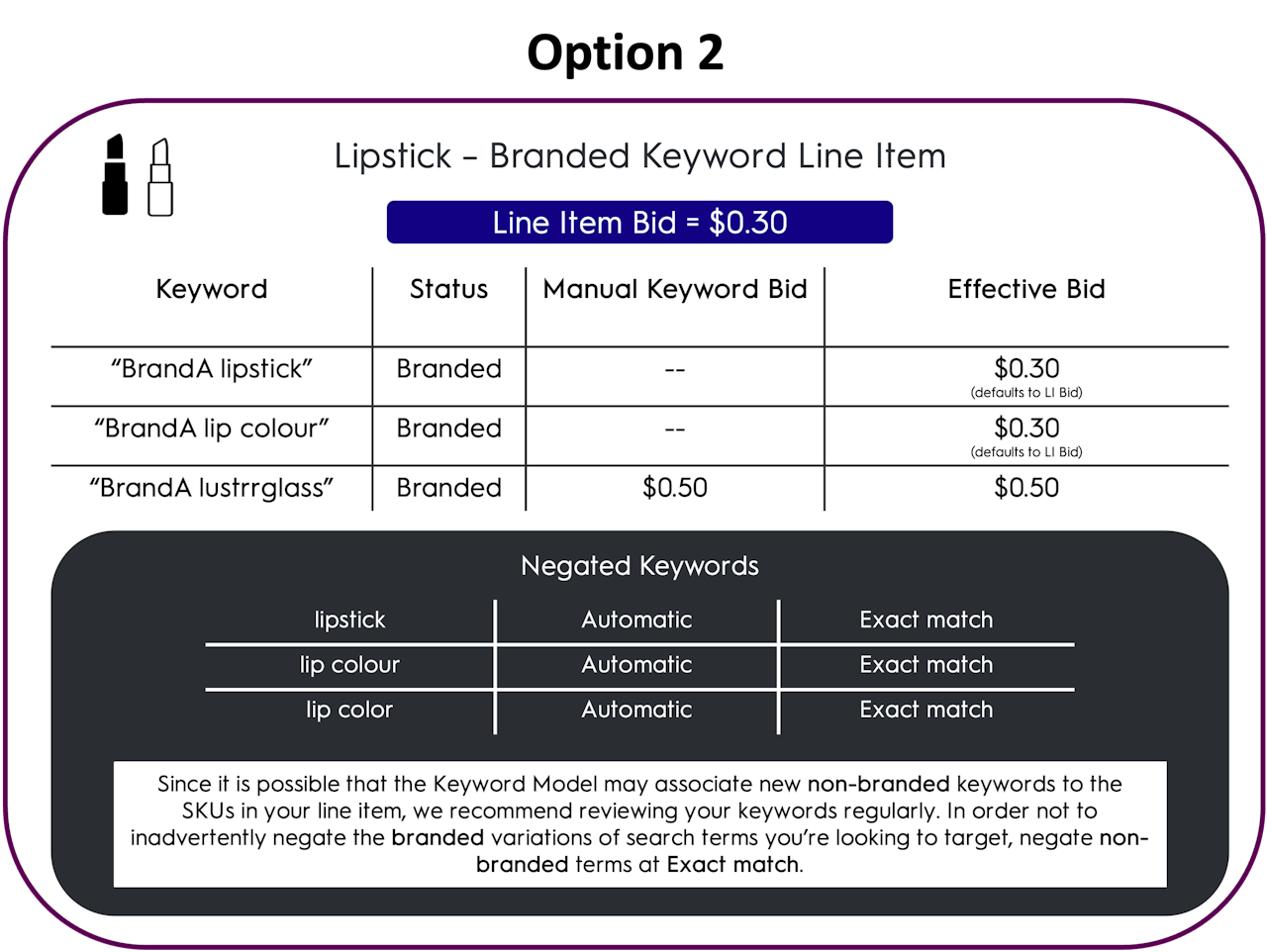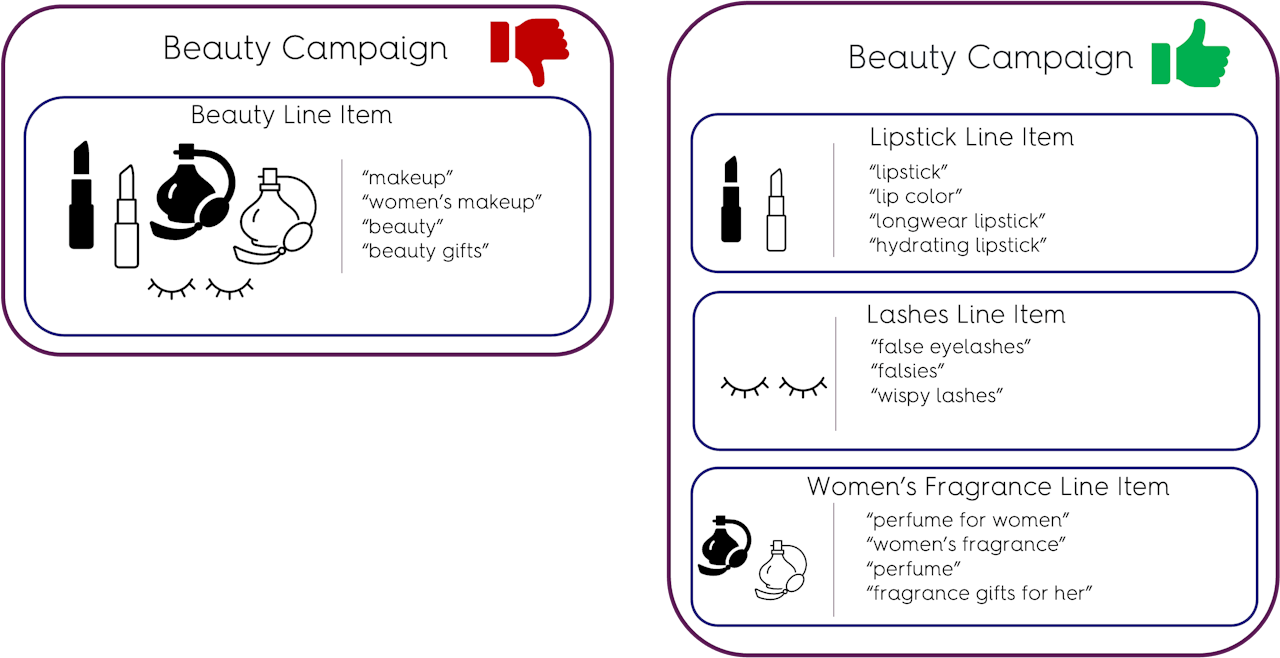
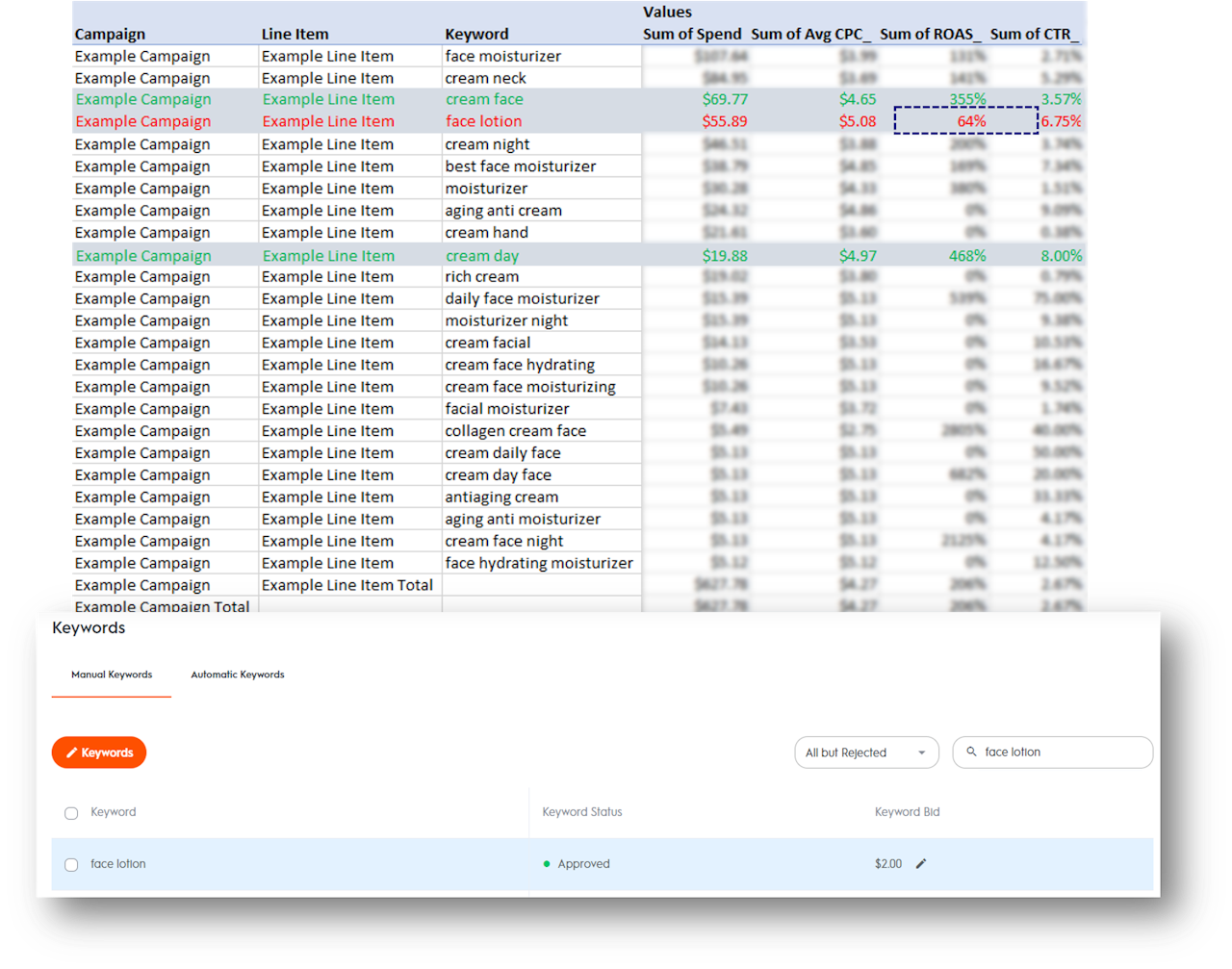
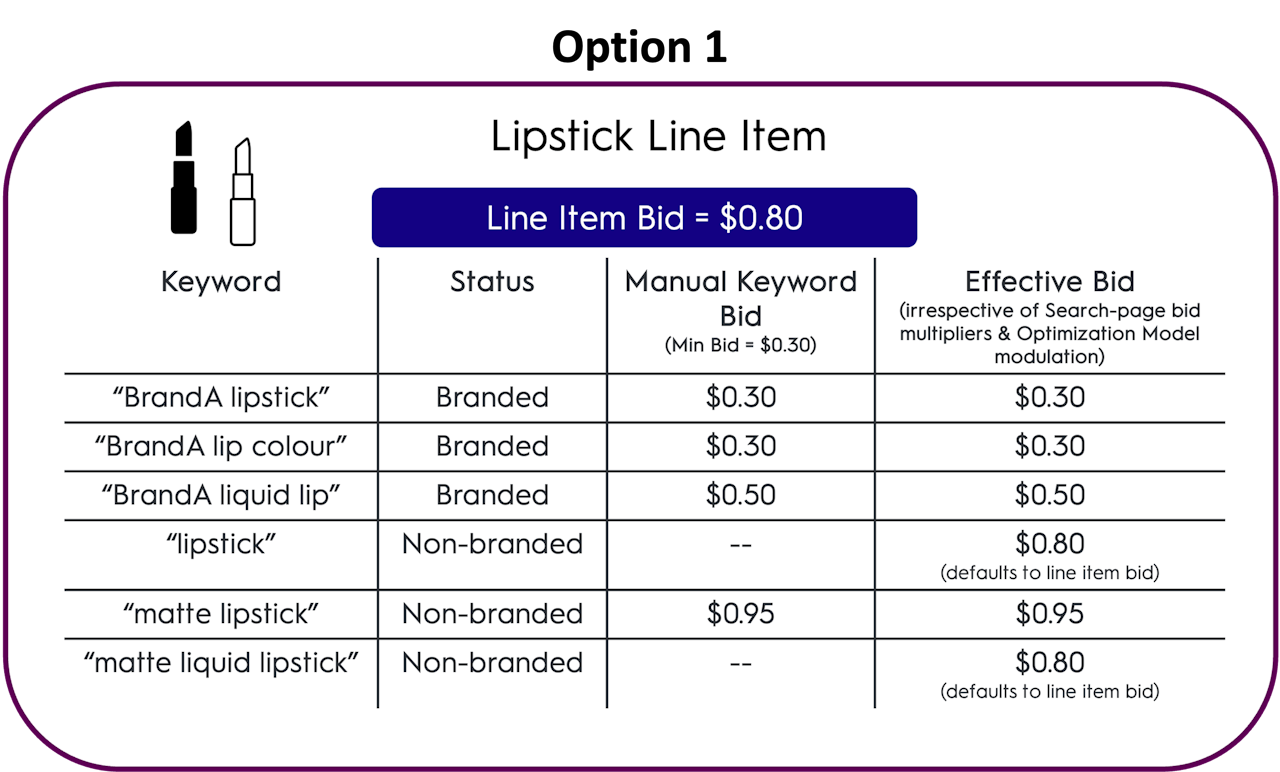

Mapping Keywords
Keyword whitelisting, blacklisting, and bidding are available at the line item level. When using keyword bidding, your line item must contain products similar to one another so that any manually submitted keyword is indeed relevant to ALL products, and therefore eligible for approval by our internal Keyword Review team.
If you intend to only use the automated keyword model and do not plan to submit manual keywords or use keyword bidding, we recommend consolidating your SKUs into fewer line items to help with scale.

Identifying Terms to Bid On
When Keyword Bids are implemented, we recommend reviewing and optimizing your line item’s keyword performance weekly.
You can do this by going to:
Analytics > Auction Activity > Breakdown by Keyword > Export.
To understand which keywords are having the greatest impact to overall performance, we recommend sorting the keywords by spend (highest to lowest).
Adjust your bid for keywords that are performing with higher or lower efficiency than campaign benchmark.
When to use Keyword Bidding
Criteo’s automated bid optimization models (Revenue, Conversions, or Clicks) are powered by machine learning and allow the input CPC to be modulated slightly during auction to increase the likelihood of a click or a sale.
While use of the automated optimization models is key to achieving performance at scale, keyword bidding generally gives you more control to refine your bidding strategies to meet individualized business objectives that could vary slightly from your chosen optimization model’s explicit design and goals.

Branded vs. Non-Branded Keywords
With Keyword Bidding, advertisers now have the flexibility to bid higher or lower for non-branded versus branded search terms. You can use the Conquesting Keyword Targeting Strategy, which focuses only on competitor or complementary brand keywords. It lets your ads show up when shoppers search for other known brands in your category. This means your product can appear when shoppers search for a competitor’s brand, capturing demand from users with strong purchase intent.
As a brand, why should I bid on my own branded terms?
Bidding on branded terms gives brands control over what shows up first to shoppers searching their brand.
Sponsored Product ads on branded terms can be used to boost hero products that are not already highly ranked organically, or new products that you want existing brand loyalists to discover.
Shoppers searching actively for your brand show intent to make a purchase; you may prefer to pay less for your own branded terms. With keyword bidding, you can set lower bids on these terms while controlling which of your products populate first for these searches.
There are multiple ways to implement this strategy:
Option 1: Create 1 line item.
Option 2: Create 2 line items: 1 for branded and 1 for non-branded.
We recommend choosing your setup based on your reporting requirements and whether you will frequently need to adjust bids holistically for all branded keywords or all non-branded keywords at once. If this is the case, option 2 may be preferred.
Focusing on Specific Terms
Use Keyword Bidding to increase the presence and visibility of your brand on a specific search term.
Perhaps your brand is a leader in a certain product category, and appearing first in search results for the top related keyword (usually a generic non-branded search term – Example: laundry detergent) is a key strategic priority. You can now implement a higher bid on this particular search term, without impacting your bids on other terms that may be less critical to dominate.
In addition, Keyword Bidding offers you the flexibility to adjust your bids accordingly on select search terms, without sacrificing automation coming from your line item’s selected optimization model.

